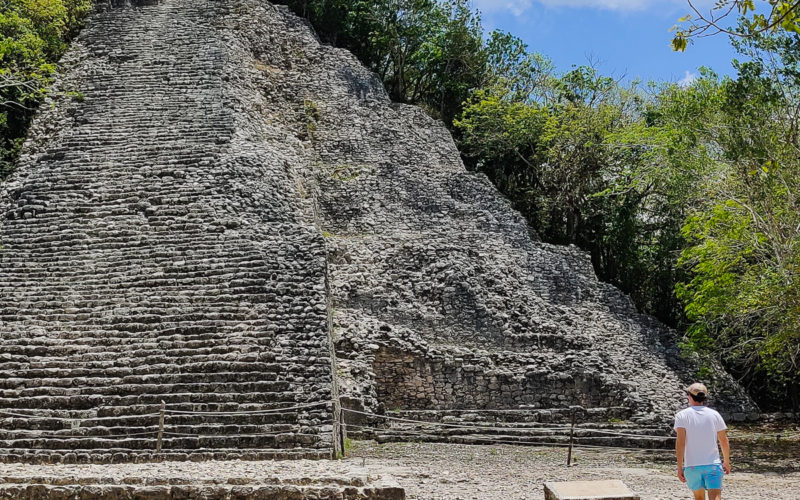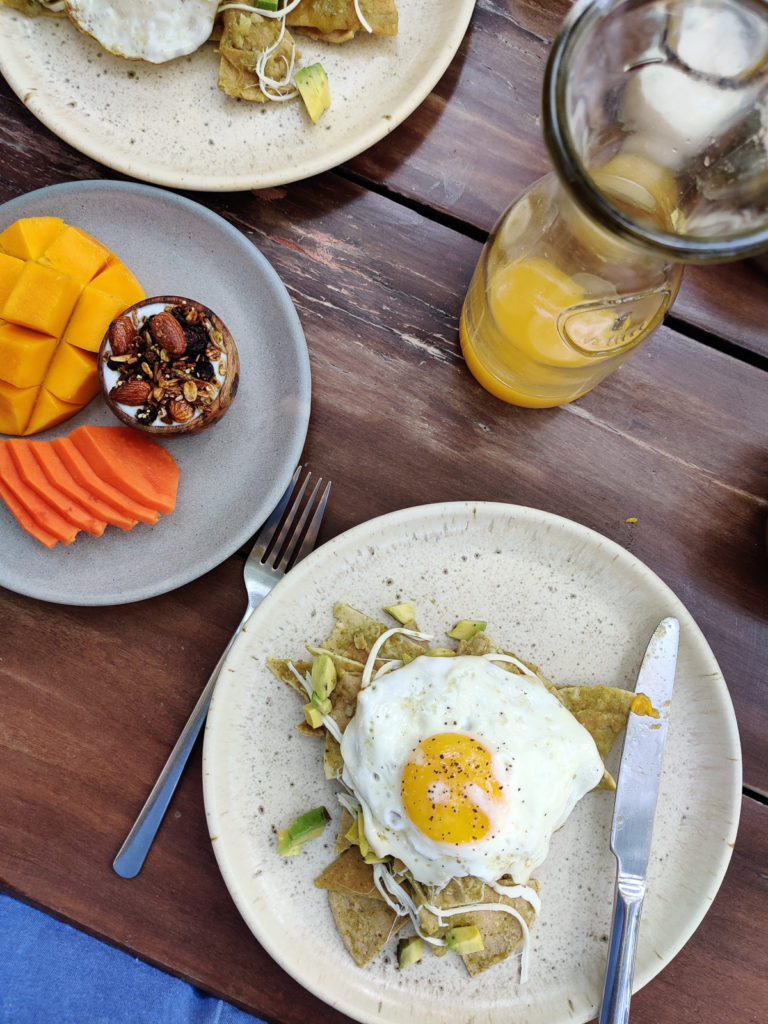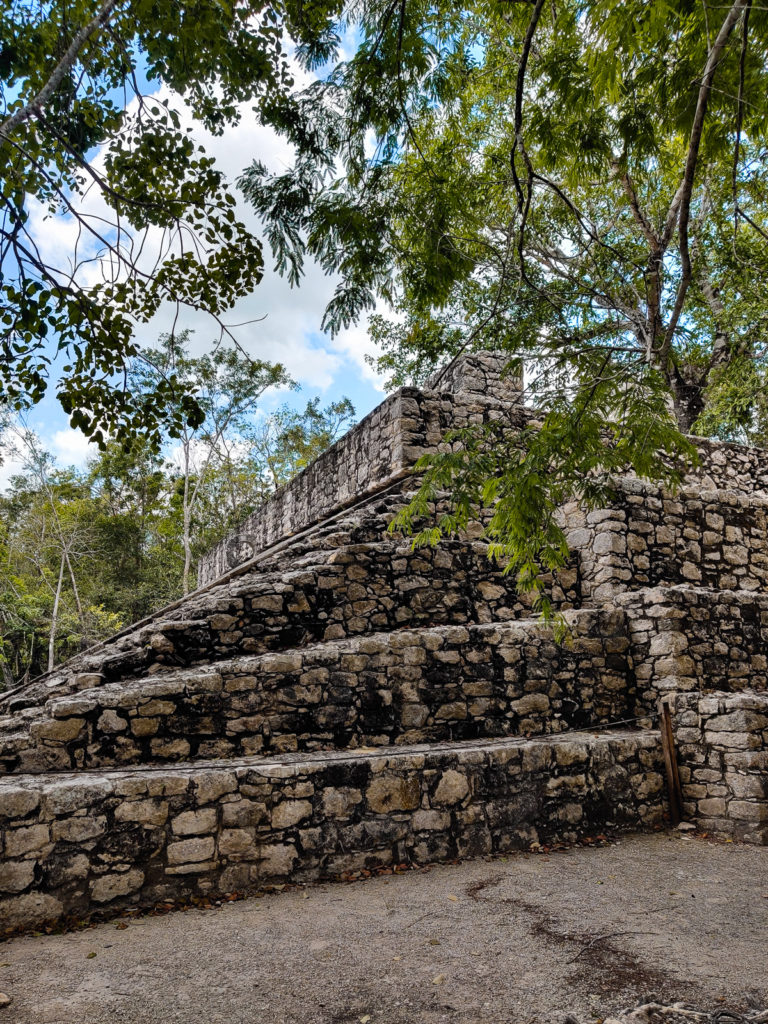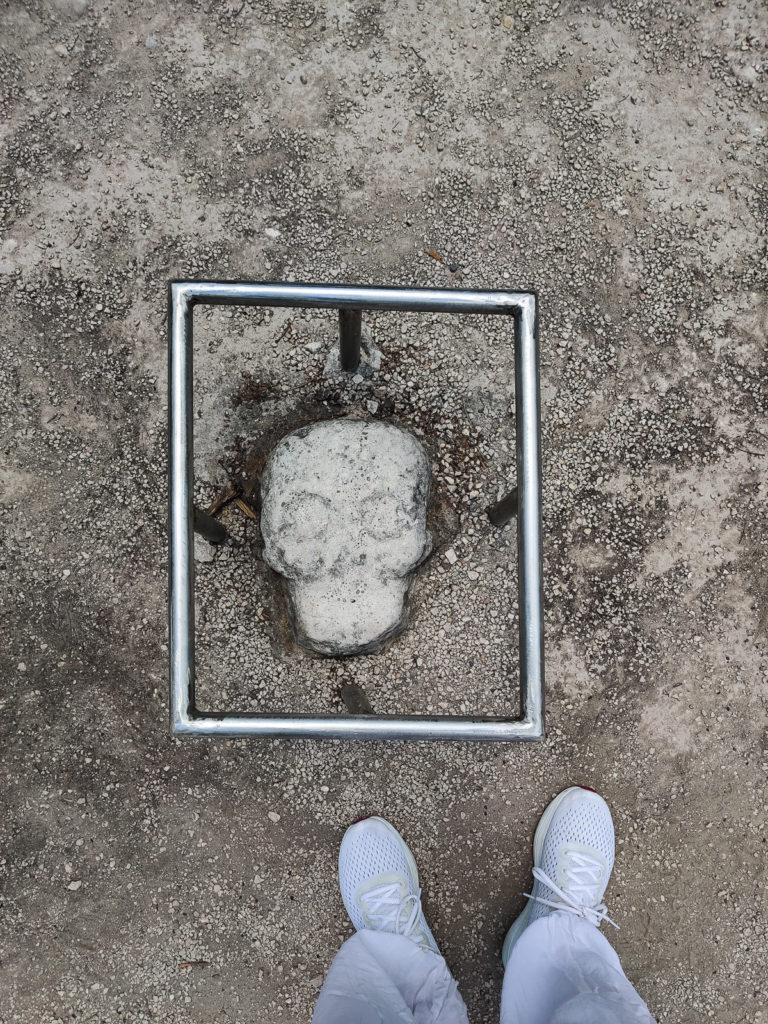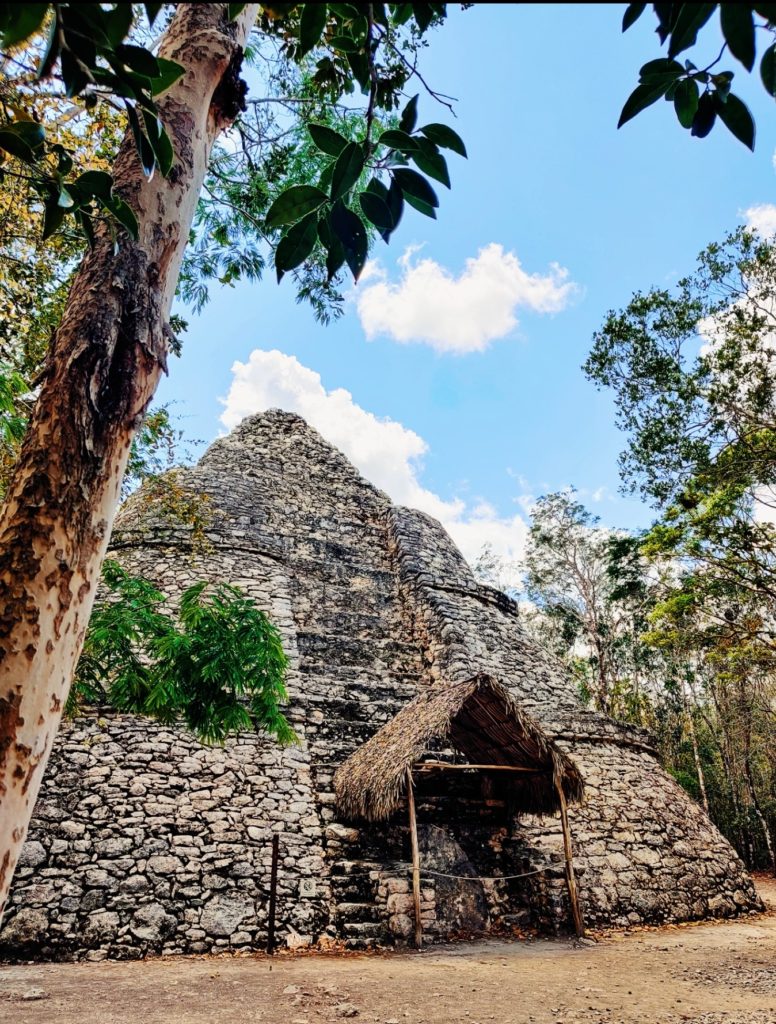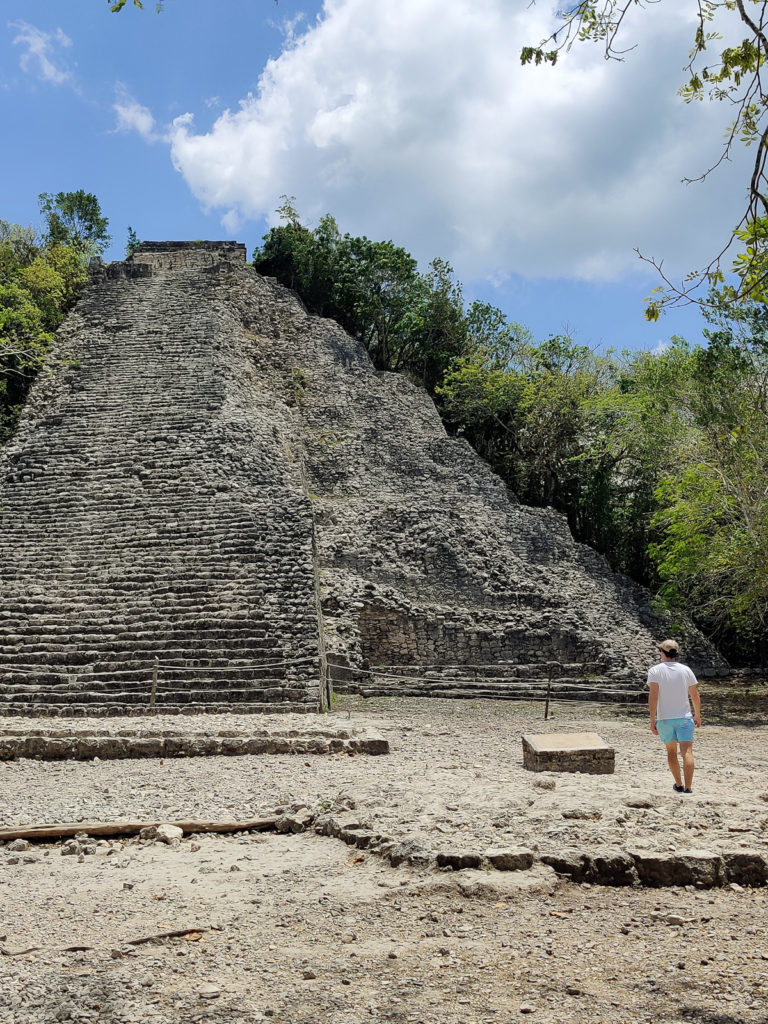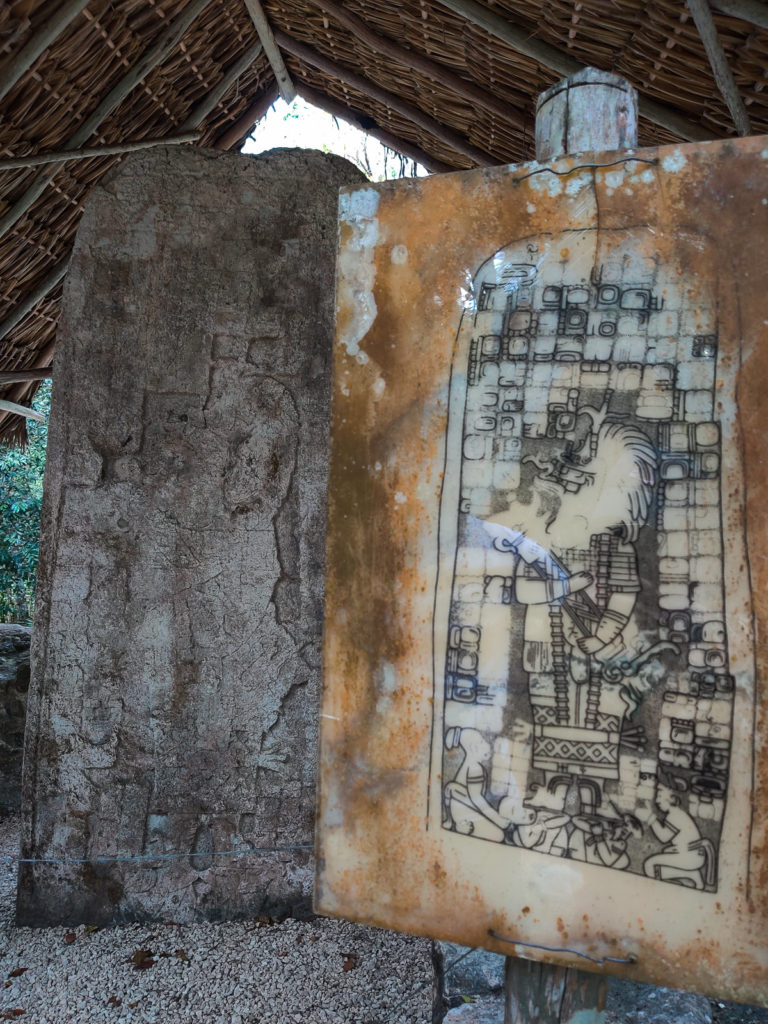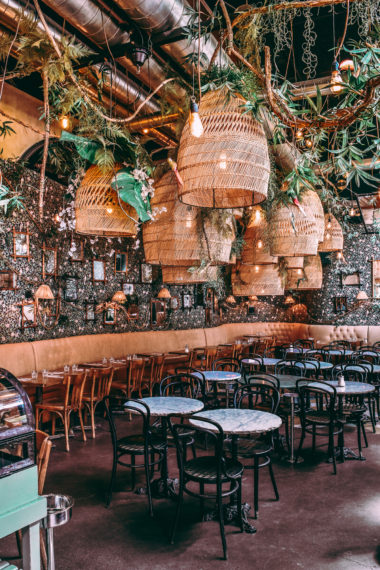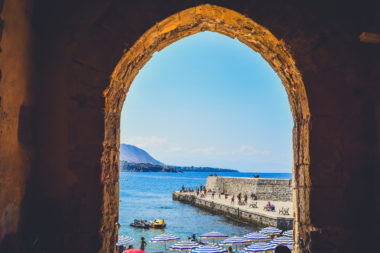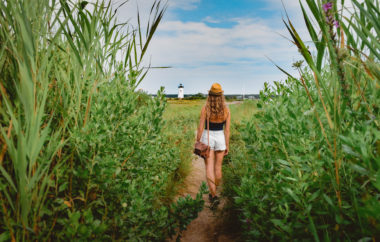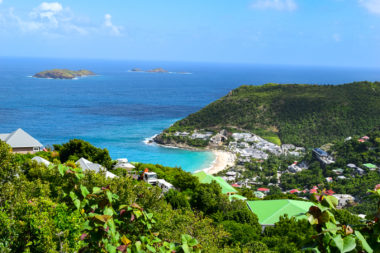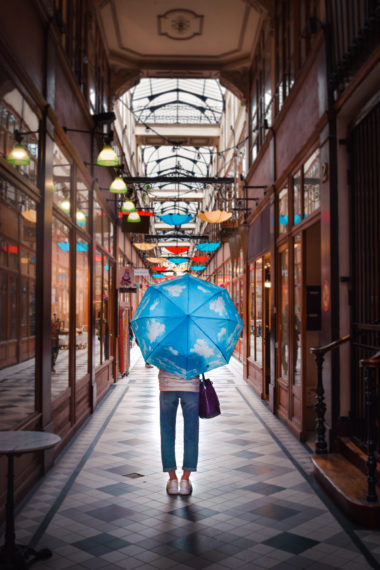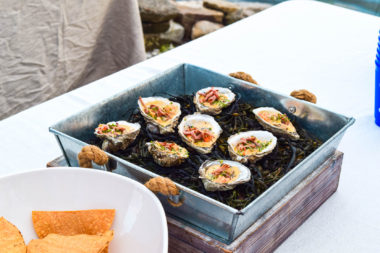Located in the jungle, unexcavated and with multiple civilizations, Coba Ruins is the non-touristy ruin you need to visit while in Yucatan Mexico.
While leaving idyllic Tulum is hard, it is worth it. Pat and I drove to the Coba Ruins. We were told by locals to go to the Coba Ruins instead of Chichen Itza or the Tulum Ruins located on the beach. We had heard they were cooler, more immersive, bigger and less touristy. The primary attraction of the Coba Ruins is that you could bike around the grounds and explore all the different civilizations, something that Chichen Itza does not offer. The drive from the end of Tulum Beach to the Coba Ruins is about 1 hour 15 minutes–so not bad. And there really isn’t much traffic, aside from the usual bumper to bumper traffic on Tulum Beach Road.
The Coba Ruins are open from 8AM – 5PM every day of the week. Try and avoid Sundays when the ruins are open for free to locals, it gets busy. The cost to get into the Coba Ruins is about $4. Parking is about $2.50. Reasonable all together, but renting the bikes is an additional $4 each. Do it, don’t even think twice. If you prefer, you can also get escorted around in a bicycle taxi or take a tour. The best time of day to visit the Coba Ruins is in the morning before it gets too hot. Luckily, because Coba Ruins are located in the jungle, the roads are very canopied and shaded, but the heat can get unbearable in the afternoon.
Tip:
If you don’t want to pay or join a group tour, come prepared with your own Coba reading material before entering the grounds. The Coba Ruins are set-up so that they give you no information whatsoever about what you’re seeing. I’m pretty sure they do this on purpose so that you’re forced to hire a tour guide to explain to you what you’re looking at. Gather all your reading materials before you get there so you can do your own walking tour. You’re reading can start here with this post!
The Coba Ruins are known for having the largest network of stone causeways in the ancient Mayan world, called sacbes (white roads). That’s why you’re able to rent bikes here and tour the grounds. They were like the OG highways of the Mayan era. There are over 50 at Coba and 16 are open to the public. The longest is about 62 miles in the direction of Yaxuna near Chichen Itza. All the highways lead back to the main pyramid area of Nohoch Mul or small lakes for easy access to water supply.
Coba had a population of about 50,000 inhabited from 100 AD to 1550 AD. A past time among the Mayans was a ballgame called ollamaliztli. You’ll find plenty of ballcourts in Mayan civilizations. Embedded in the ground of each ball court is a symbol. The one at Coba was the ancient skull stone (pictured above). Usually, the loser of the ball game was sacrificed and the winner had easier access to the heavens.
Ixmoja is the largest pyramid at Nohoch Mul–and the largest pyramid in the Yucatan Peninsula. It’s 42 meters (138 feet) and used to be the heart of the city. In comparison, Chichen Itza only has 91 steps. Unlike other Mayan ruins, you are allowed to climb the 120 stone steps while holding onto a rope. Unfortunately due to COVID protocols, when Pat and I were there, we weren’t able to climb Ixmoja pyramid. So check to make sure you can now, although there is no official website.
Throughout the grounds, you’ll come across various stelae, or large stone slabs, that have engravings and artwork with historical significance (pictured above). The drawings and hieroglyphs usually document major historical events or cultural moments. A lot of the stelae have drawings next to them to help you decipher the images and if you look hard enough, you might be able to see it in the stone slab.
The history of Coba came to an end around 900 AD. When Chichen Itza won a historical battle and became the power of the Yucatan.
Following the Coba Ruins, we decided to stop for a quick refreshing dip in one of the unique cenotes nearby…read on for my experience at the nearby semi-open Cenote Tankach-Ha.
>> Next: 15 Restaurants in Tulum & Unique Foods to Try
Follow SVADORE on:
